Popular with farmers, ranchers, and veterinarians, cow magnets are a well-known method of preventing hardware disease in cattle.
Traditionally, cow magnets were strong Alnico magnets about 1 cm by 8 cm (0.4 by 3.1 inches) in the shape of a smoothed rod, but today they are more commonly several ring-shaped ferrite magnets attached to a stainless-steel or plastic core, in the same shape as the single-piece original. Newer designs to help increase effectiveness include a cage design, in which the magnet holds metal objects inside a protective plastic framework. Even newer designs include a stronger array of rare-earth magnets inside a stainless steel body that resembles the original Alnico design.
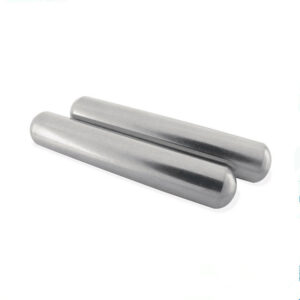
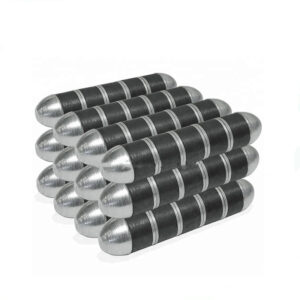
About Hardware Disease
Hardware disease is a common term for bovine traumatic reticule-pericarditis. It is usually caused by the ingestion of a sharp, metallic object. These pieces of metal settle in the reticulum and can irritate or penetrate the lining. It is most common in dairy cattle but is occasionally seen in beef cattle. It is very rarely reported in any other ruminants.
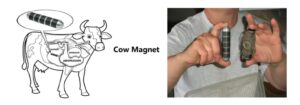
The University of Missouri Extension office estimates between 55 and 75 percent of cattle in the eastern United States have some type of hardware in their stomachs. Because cows don’t discriminate when it comes to their food, they easily eat pieces of metal with their feed or when grazing. The metal makes its way to the cow’s reticulum (or second stomach). Here it can puncture the stomach wall, developing into an infection or damaging other organs. This is referred to as hardware disease, hardware stomach, or more rarely, tire wire disease.
Hardware disease causes loss of appetite and decreased milk output in dairy cattle and the ability to gain weight in feeder stock. It can be difficult to conclusively diagnose but can be prevented by the oral administration of a cow magnet around the time that the animal reaches the age of one year.
Source of Risk
Decades ago, the primary culprit of hardware disease came from baling wire. As baling wire has fallen out of use for this exact reason, metal still finds its way into feed in the form of roofing nails. Additionally, bits of fencing wire and other metal ‘junk’ gets chopped up in balers and feed choppers.
Other sources of contamination come from blades and other parts of machinery wearing out and falling into choppers. Also accidentally allowing grazing in areas typically prone to litter or junk can lead to the digestion of metal.
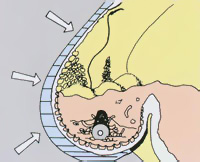
Usage of Cow Magnets
Simple Attraction: Cow magnets do their job by catching metal items and preventing them from doing damage.
Magnets play two roles in preventing hardware disease. First, the use of heavy-duty plate magnets on feed trucks or conveyors acts as a first line of defense to catch any rogue metal as it passes through the equipment; Second, many veterinarians recommend cow magnets. Often given after calves are a year old, cow magnets need only be administered once in the bovine’s lifetime to effectively hold the ferromagnetic object in the reticulum.
If hardware disease is suspected, a magnet should be administered orally through a tube into the reticulum. Depending on the type of magnet used, inserting a second magnet could cause internal pinching which could lead to serious complications. A broad-spectrum antibiotic should also be given to control infection. The cow should be confined and movement limited in the hopes that the reticulum can repair the hole. Surgery is necessary in some cases and involves rumenotomy with the physical removal of the object. In some advanced cases that don’t respond to medical or surgical therapy, slaughter is often considered from an economic perspective.

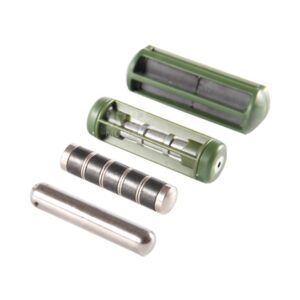
Prevention
Good feed management is also important; in smaller operations, some farmers pass metal detectors or magnets over the feed.
A rancher or dairy farmer feeds a magnet to each calf at branding time; the magnet settles in the rumen or reticulum and remains there for the life of the animal. The magnet is administered after fasting the cow for 18–24 hours. This is most effective if done to the entire herd before the age of one.
The cow magnet attracts such objects and prevents them from becoming lodged in the animal’s tissue. While the resultant mass of iron remains in the cow’s rumen as a pseudobezoar (an intentionally introduced bezoar), it does not cause severe problems of hardware disease.
Cow magnets are widely available from veterinary, feed supply, and scientific supply sources.
If you are interested in cow magnets, you can contact sales06@hsmagnet.com for more details, thanks for reading.



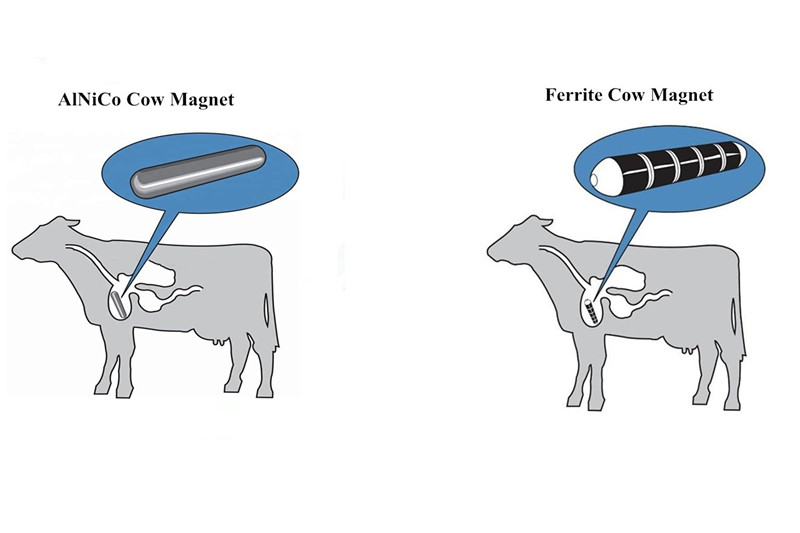
Pingback: How to Feed Cattle Magnets for Health and Safety - Hangzhou HS Magnet Co.,Ltd